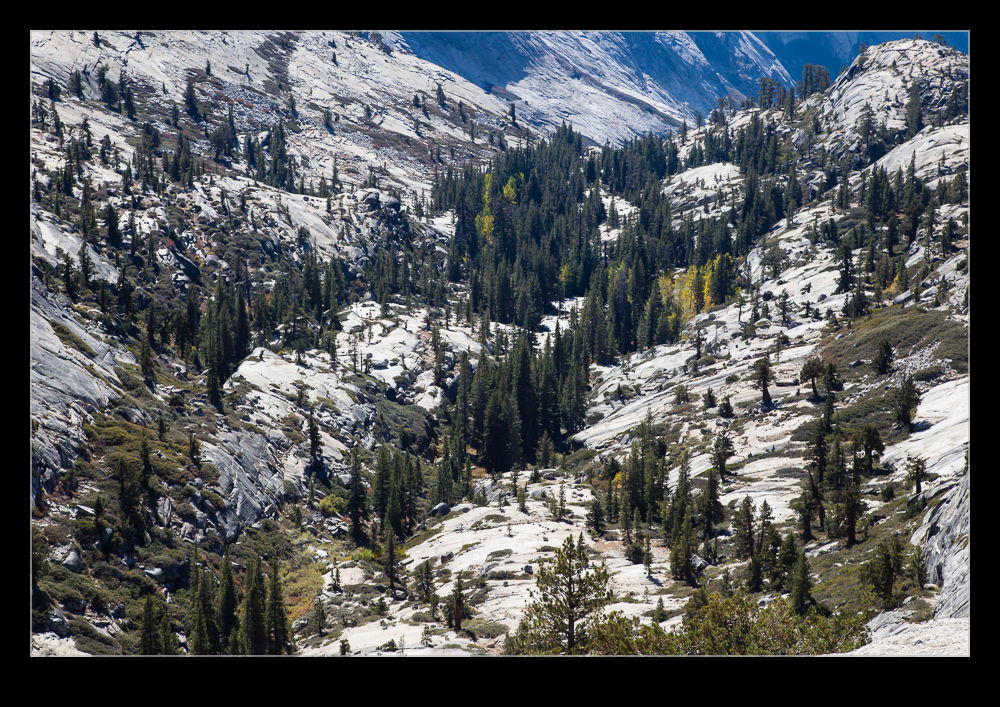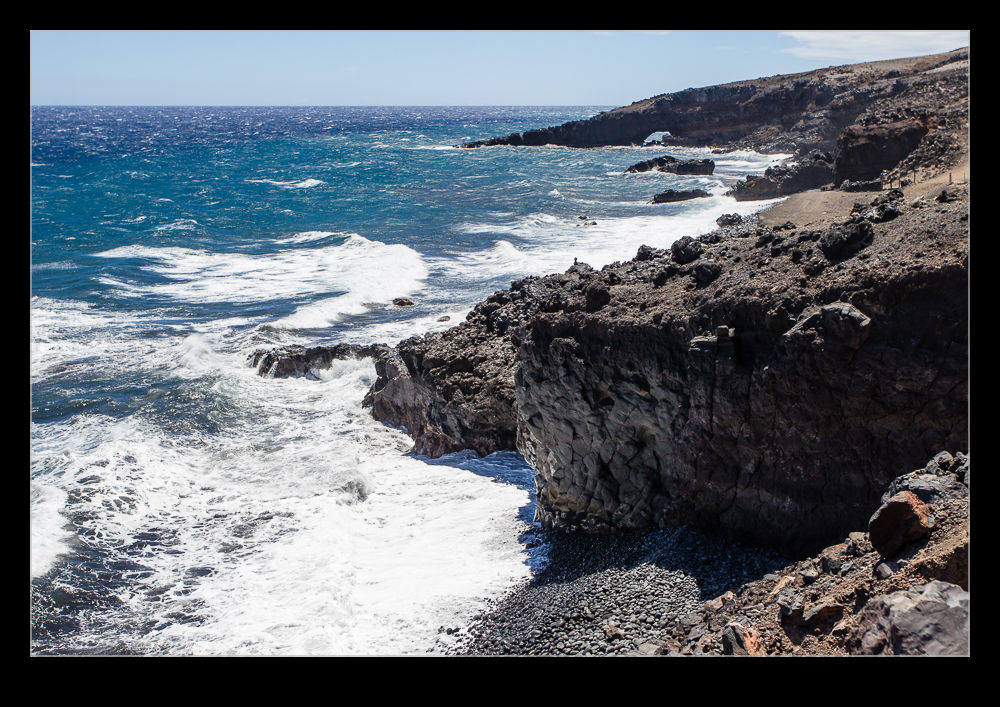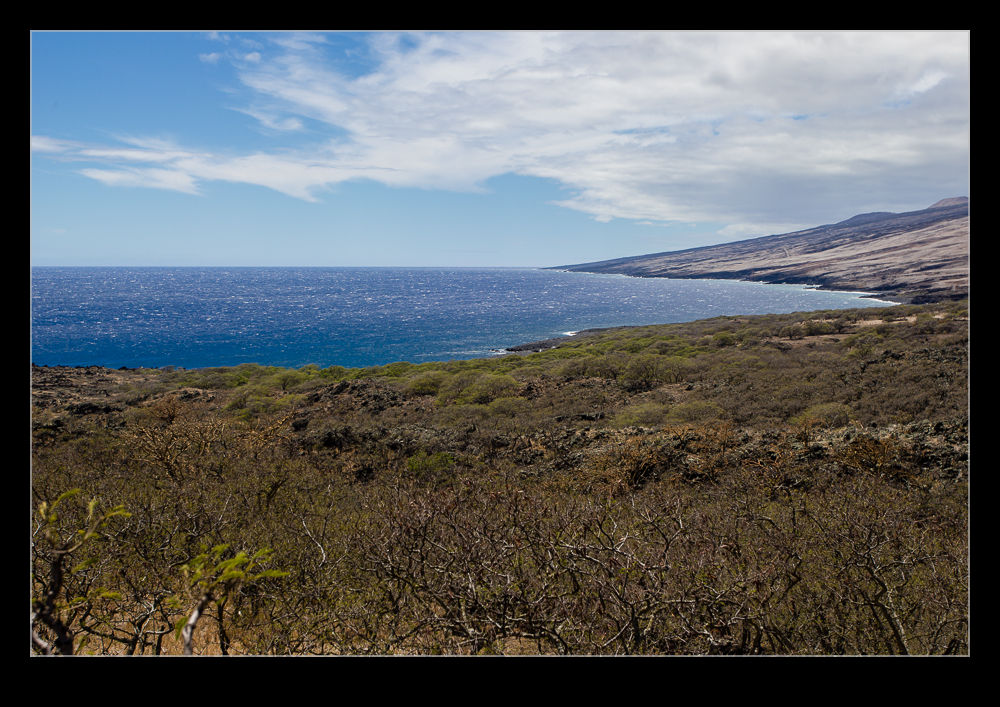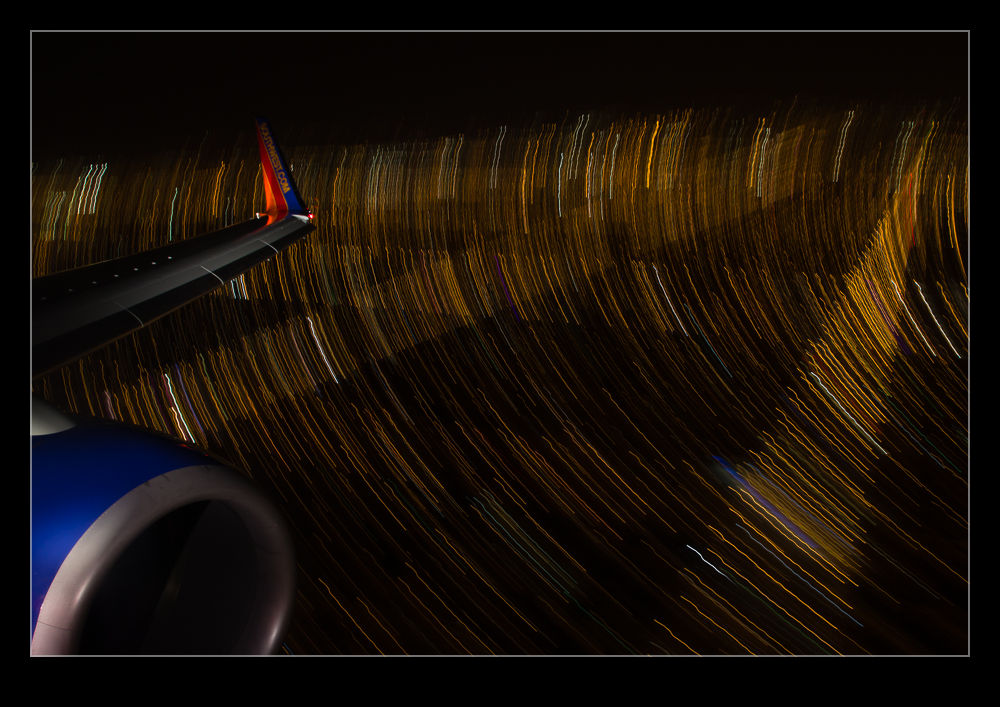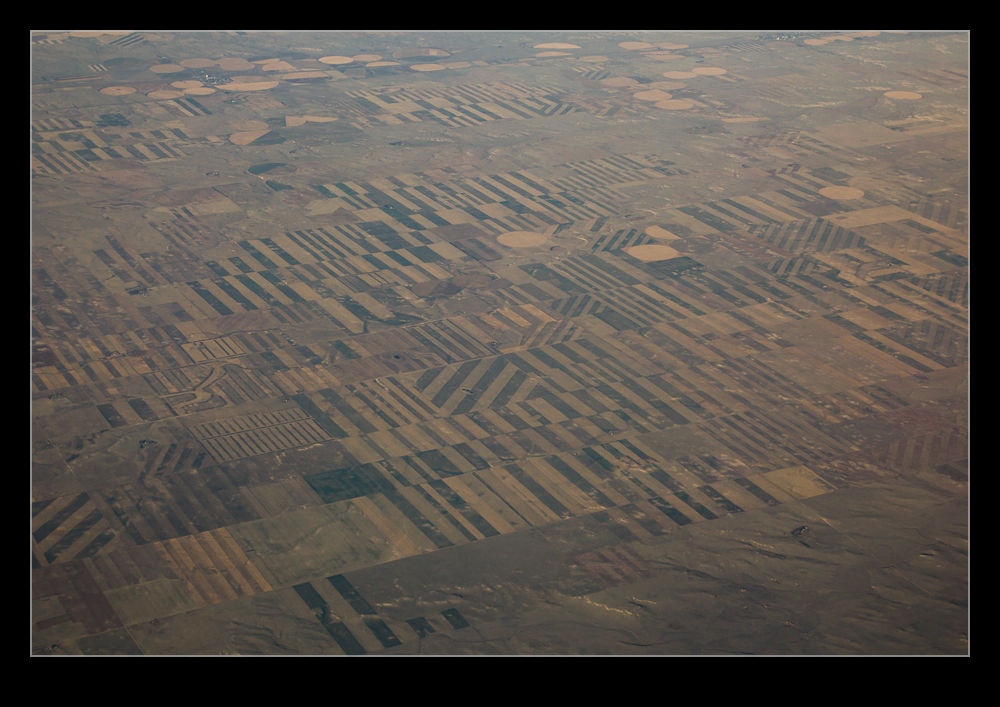 One of the things about flying across the country a lot is that you get to see a variety of scenery. Sometimes there are wide open spaces with not much to see. Other times there are mountains and valleys. The unfortunate thing is that it is rather hard to get good photographs. First there is the limitation of shooting through windows. I always aim to be on the side of the plane away from the sun –partly out of comfort and partly for photography reasons – but having a window that is not optically perfect and then a piece of protective Perspex inside that means that reflections and distortions are a problem. Since the windows are not uniform, you can end up with some parts of the image sharp and others not. The autofocus can also struggle sometimes.
One of the things about flying across the country a lot is that you get to see a variety of scenery. Sometimes there are wide open spaces with not much to see. Other times there are mountains and valleys. The unfortunate thing is that it is rather hard to get good photographs. First there is the limitation of shooting through windows. I always aim to be on the side of the plane away from the sun –partly out of comfort and partly for photography reasons – but having a window that is not optically perfect and then a piece of protective Perspex inside that means that reflections and distortions are a problem. Since the windows are not uniform, you can end up with some parts of the image sharp and others not. The autofocus can also struggle sometimes.
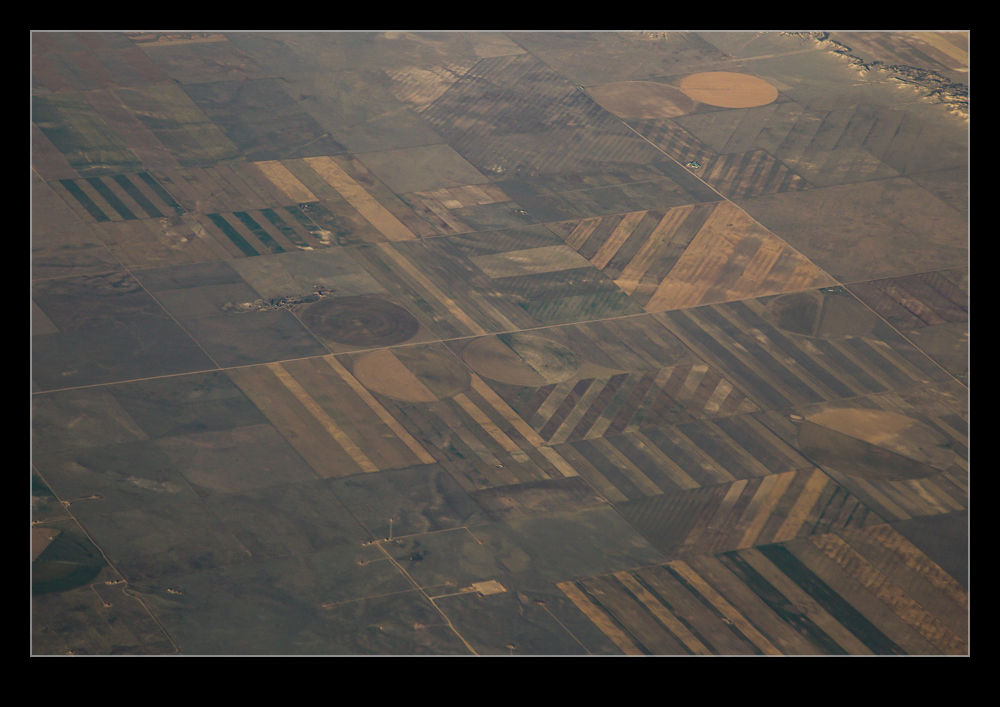 Even after all of that, you still have a problem with exposure. You are quite a long way away from whatever you are shooting (shooting straight down is impractical given the window angles and how bad the optical properties become if angling across the window) so you have a lot of atmosphere to deal with and haze becomes a problem. A certain amount of compensation is possible in post processing but it is always annoying that the shot does not look like the image you thought you saw at the time.
Even after all of that, you still have a problem with exposure. You are quite a long way away from whatever you are shooting (shooting straight down is impractical given the window angles and how bad the optical properties become if angling across the window) so you have a lot of atmosphere to deal with and haze becomes a problem. A certain amount of compensation is possible in post processing but it is always annoying that the shot does not look like the image you thought you saw at the time.
 However, sometimes you just have to suck it up since you are seeing something that you otherwise would never see. One thing that struck me on a recent flight was the patterns on the ground. The fields had been harvested relatively recently and the harvesting had left different fields with different effects making some great patterns on the ground. You would see these but, since you are moving along at a fair old clip, you had a short while to see what you wanted and make the shot before you had passed the point of the best composition.
However, sometimes you just have to suck it up since you are seeing something that you otherwise would never see. One thing that struck me on a recent flight was the patterns on the ground. The fields had been harvested relatively recently and the harvesting had left different fields with different effects making some great patterns on the ground. You would see these but, since you are moving along at a fair old clip, you had a short while to see what you wanted and make the shot before you had passed the point of the best composition.
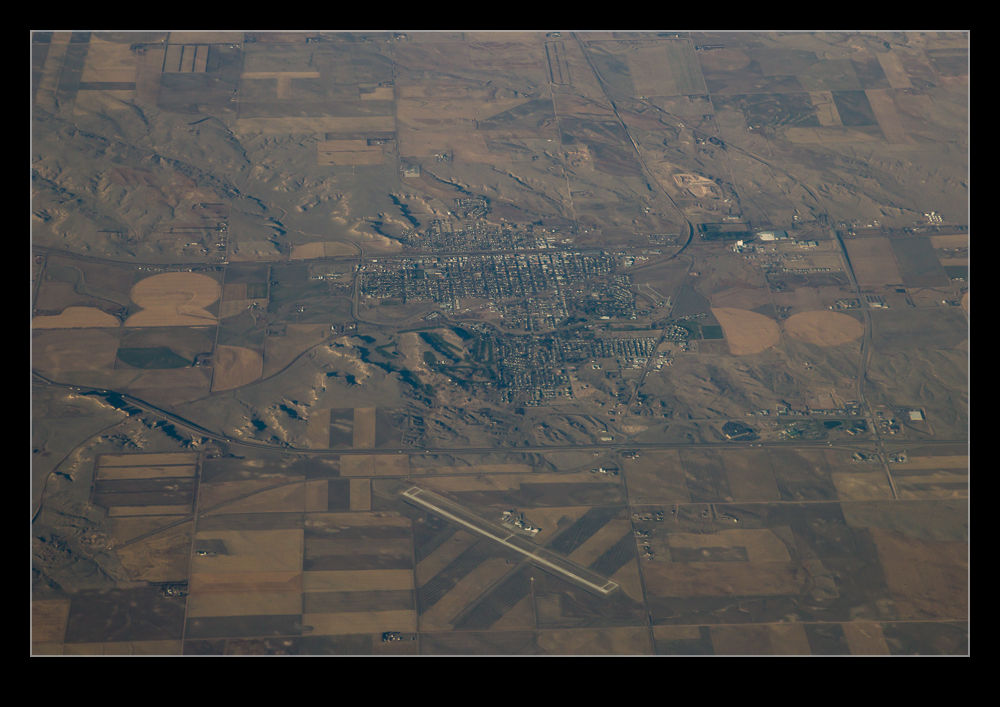 If only these would look as good as they did to me when I was there. Oh well, hopefully you will get some idea of what I was impressed by, even if the shots themselves are not impressive.
If only these would look as good as they did to me when I was there. Oh well, hopefully you will get some idea of what I was impressed by, even if the shots themselves are not impressive.
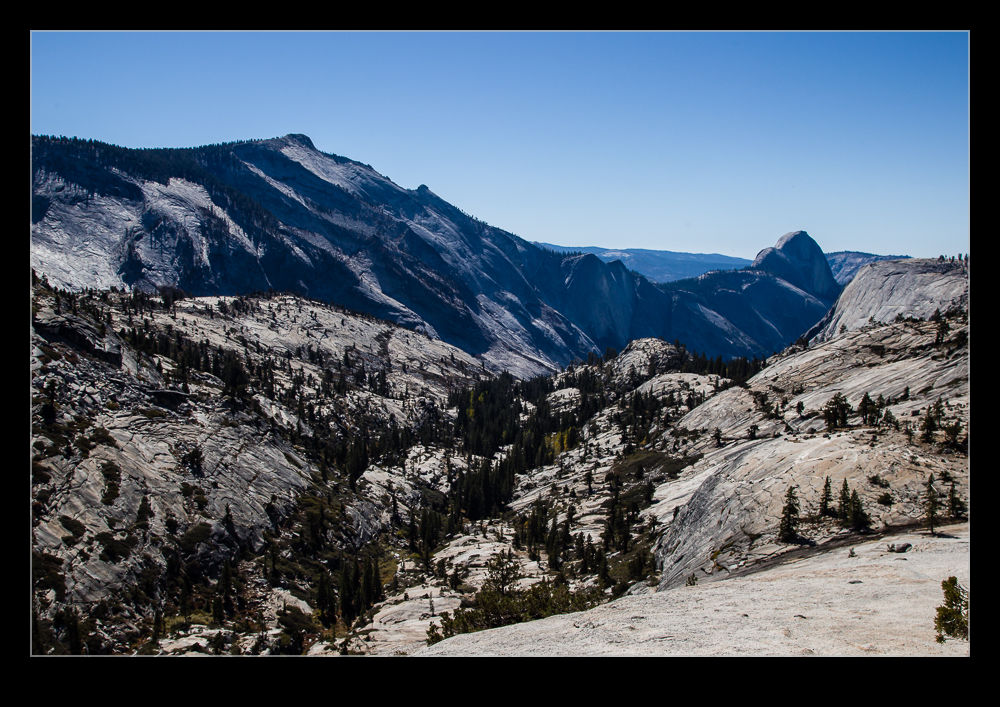 One part of Yosemite that I have not previously explored is the Tioga Pass Road. It has either been out of my way or closed for the winter during previous visits but this time I decided to take the drive across to end up at Mono Lake. The route takes you to Olmsted Point. This is only a couple of miles from my starting point in Yosemite Valley but the direct route is not available to cars so an hour’s drive is the alternative.
One part of Yosemite that I have not previously explored is the Tioga Pass Road. It has either been out of my way or closed for the winter during previous visits but this time I decided to take the drive across to end up at Mono Lake. The route takes you to Olmsted Point. This is only a couple of miles from my starting point in Yosemite Valley but the direct route is not available to cars so an hour’s drive is the alternative.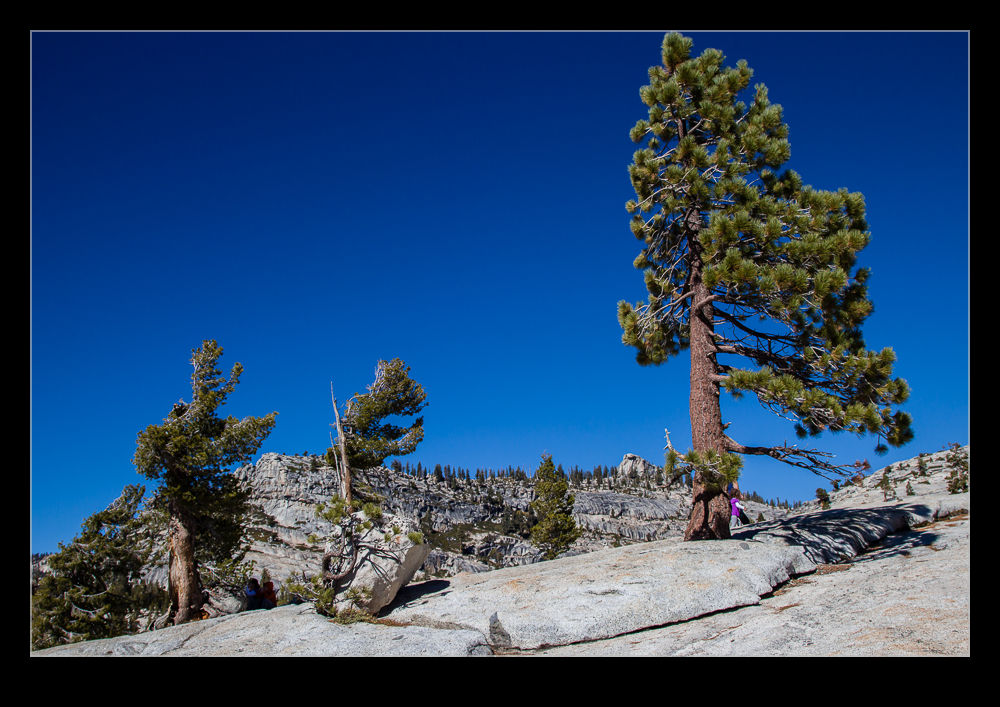 Olmsted Point itself is a pretty bleak and exposed place. The view across to Yosemite Valley is good (and would probably be a lot better at a different time of day to my visit)and you can see a lot from the parking lot. It is only a short walk to a better spot but most people don’t bother walking down. The rocky outcrop is very bright and on a sunny day the light is quite harsh. However, you do get a view of everything around you which makes it worth doing.
Olmsted Point itself is a pretty bleak and exposed place. The view across to Yosemite Valley is good (and would probably be a lot better at a different time of day to my visit)and you can see a lot from the parking lot. It is only a short walk to a better spot but most people don’t bother walking down. The rocky outcrop is very bright and on a sunny day the light is quite harsh. However, you do get a view of everything around you which makes it worth doing.